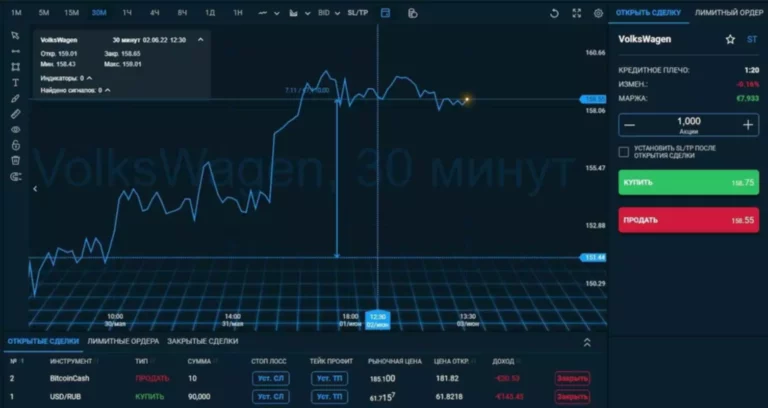Content
Let’s say you’ve identified a potential price reversal to the upside and you plan to open a buy order in the hope of getting a long run up (in the opposite direction). Another example of being cautious and taking fundamental aspects into consideration, supply and demand in particular, was when the SARS-Cov-2 pandemic hit. The fear of coronavirus spreading and lockdowns being put in place around the world caused oil demand to drop sharply. U.S. warehouses were full of oil, there was nowhere to store it, and nobody wanted to buy it. It’s https://www.xcritical.com/ important to understand basic concepts like trailing stop loss to make the transition into trading easier.
- Second, prices, even in random market movements, will exhibit trends regardless of the time frame being observed.
- An extensive number of data input variables are available to technical analysts, and an almost infinite range of formulae that can be used to process the data set.
- One key data point in this form of analysis is previously low and high prices, with the indicator being useful to spot instances when a price move in an ASK stock might change direction.
- For example, a currency pair can have significant up- and downswings in price.
- To be successful, you need to know how to read charts and use indicators to make informed decisions.
Fundamental Analysis vs. Technical Analysis
The data on the volume of a share is readily available on the charts or the trading screen. There are 2 types of technical analysis – manual, where somebody looks Initial exchange offering at graphs and figures to decide when it’s time. Below are some of the advanced technical tools which traders should analyse along with the above technical tools.
Part 5 – The basics of candlestick charts
For example, if an investor finds an undervalued difference between fundamental and technical analysis stock, technical analysis can help to define when the price could reach its lowest lows for an entry point. Even though technical analysis may seem intimidating at first, there are various ways to learn it. That is, read about investing, how the markets, stocks, and the economy, and gain a thorough understanding of the core concepts. Some main types of technical indicators include trend following, oscillators, volatility, and support and resistance, which are grouped based on their function. The technical analysis evaluates and identifies profitable investment opportunities by tracking statistical trends from past data presented on charts.
The Basics of Technical Analysis: Key Concepts Explained
How many stocks or industry groups make the final cut will depend on the strictness of the criteria set forth. These stocks could even be broken down further to find the 3-4 that are the strongest of the strong. There are many ways to learn technical analysis, including through books and online courses.
Technical vs Fundamental Analysis
Explore the various types of digital marketing, including SEO, SMM, and content marketing. Understand the challenges faced in this competitive landscape, and discover the essential skills needed to excel in the modern business world as a digital marketing specialist. Learn about investing, trading, retirement, banking, personal finance and more. Discover the difference between our account types and the range of benefits, including institution-grade execution. Understanding and controlling your emotions, biases, and mindset can make all the difference in your ability to trade successfully.
For example, if the company’s earnings are higher than expected, the stock will gap up the next day. These two trend lines join the peaks and troughs and they occur in the direction of the ongoing trend. Market Investopedia helps to provide you complete Forex trading educational solution by Leading the way in online trading education and training.
By studying historical price data and applying various technical tools, traders can gain valuable insights into market sentiment and trend direction. Chart patterns and indicators help traders identify potential entry and exit points, while Fibonacci retracements and extensions aid in setting price targets and managing risk. In this article, we aim to provide an introduction to understanding technical analysis and delve into its core concepts, methodologies, and applications in trading systems. Whether you’re a novice trader or an experienced investor, mastering the art of technical analysis can significantly enhance your decision-making process. Market patterns, such as basic chart patterns and candlestick patterns, are graphical representations of price movements that often exhibit recurring behavior.
Once you have a solid foundation, you can start testing your trading skills through paper trading before you start investing real money. Simple Moving Averages (SMA) are calculated by adding the closing prices for a set number of periods and then dividing the sum by the number of periods. Our mission is to empower readers with the most factual and reliable financial information possible to help them make informed decisions for their individual needs. The articles and research support materials available on this site are educational and are not intended to be investment or tax advice. All such information is provided solely for convenience purposes only and all users thereof should be guided accordingly.
Price action is simply the term used to explain how a line detailing price levels moves over a chart over time. Some traders rely exclusively on price action to guide their decision-making, with their analysis helped by features such as support and resistance price levels. They also include important high or low-price levels, which factor in the psychological importance of price moving into unchartered territory. In the below price chart, Telstra Group Ltd stock is nearing a support level that has previously been a point at which price rebounds. That offers opportunities for those looking to buy the dip, but a break below the line would trigger an opposite signal, indicating that the path of least resistance is now downward. Understanding these technical indicators and chart patterns equips traders with valuable tools to interpret price movements effectively and make informed trading decisions.
This is a great way for you to practice trading strategies and learn to recognize charting patterns. Not all stocks or securities will fit with the above strategy, which is ideal for highly liquid and volatile stocks instead of illiquid or stable stocks. Different stocks or contracts may also require different parameter choices—in this case, different moving averages like a 15-day and 50-day moving average.
Establish a clear trading plan that outlines your goals, risk management strategies, and preferred trading techniques. Practice regularly with a demo account to hone your skills and continuously refine your techniques and strategies based on your trading experiences. Those looking to learn how to do technical analysis will benefit from appreciating how indicators are broken down into a series of subgroups.

However, it isn’t always as straightforward as it sounds because prices move in many periods of highs and lows, and the overall direction can help establish a trend and know where the market is going. It is therefore only used primarily for long-term trends, and for an in-depth analysis, other charts are necessary. There are several types of charts used by analysts depending on their trading goals, and the most common ones include line charts, bar charts, or candlestick charts. Another criticism of technical analysis is that history does not repeat itself exactly, so price pattern study is of dubious importance and can be ignored.

Technical analysis assumes that trading behaviors of other investors occur in patterns and that history will repeat itself. This is contrasted with Fundamental Analysis in which investments are evaluated by the financial performance of a company as evidenced through fundamental ratios such as gross margin and ROI. This subjectivity can lead to varied trading signals and, consequently, different trading outcomes based on the same data set. For instance, while one analyst might see a forming head and shoulders pattern, another might interpret it as a consolidation phase before a breakout. Each vertical line connects the highest and the lowest price of the chosen trading period. The horizontal line on the left indicates the opening price, and the horizontal line on the right shows the closing price for that period.
